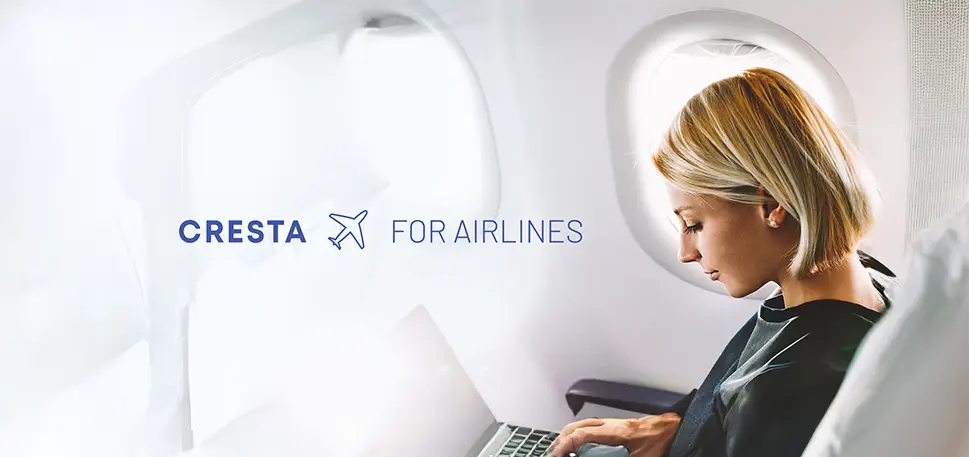The last couple of years have been a bumpy ride for airlines. Demand for air travel fell by over 65% in 2020, leading to hundreds of thousands of job losses in the industry. But as passenger volume increases progressively, meeting (and even exceeding) pre-pandemic numbers, times are still turbulent for airlines.Now attempting to bounce back from job cuts, airlines are struggling to re-staff across the board — a fact that has far-reaching implications. So, with headcount low and demand high, airlines somehow need to create positive customer experiences while maintaining employee satisfaction in their contact centers.
Short Staff, Long Wait Times
Most airlines made major cuts in 2020. Now, as demand for air travel bounces back, the impact of those cuts is being felt acutely by customers and staff alike. Lacking headcount in every area — from pilots and flight attendants to baggage handlers and agents — airlines have canceled 11% more flights so far in 2022 than during the same period in 2019. This means that irregular operations (IROPs) and their corresponding volume spikes are happening more frequently, and airline agents are struggling to keep up. Excessive wait times to reach airline customer service have been top of mind since 2021 and it’s only gotten worse — the public has become increasingly critical of airline customer service as customers share more and more horror stories of spending hours on hold. All of this may account for why the DOT has received 300% more consumer complaints about airlines in 2022 than they did pre-pandemic. So as airlines struggle to staff their contact centers, agents’ risk for burnout is higher than ever.
More Work on Top of More Work
At the most basic level, there are two distinct challenges at play in airline contact centers: headcount is down and volume is up. In combination, these issues make each other exponentially worse. To put it in context, some airlines cut their staff by 50% during the pandemic. That means agents would still be handling up to double the work they had in 2019 if the volume of conversations only bounced back to 100% of what it was pre-pandemic. But we know that volume hasn’t just recovered — it has increased. Thanks to staffing shortages in every area turning IROPs into a regular occurrence, agents are handling significantly more conversations with more frustrated customers and fewer resources. With the outlook on regaining headcount rather bleak, airlines must keep their agents happy and somehow make them more efficient. Simply put, employees are fewer, complaints are higher, and customer loyalty is more important than ever — airlines need to find a way to do more with less.
Key Tactics to Enable Agent Efficiency
With so many evolving challenges threatening the industry, why should airlines focus on improving agent efficiency? Because as the industry’s hiring frenzy creeps along, it’s the most impactful step airlines can take right now. In this critical period, airlines can help boost efficiency and make agents’ jobs easier while better serving clients. Cutting costs is an oft-cited objective, so more efficient agents bring immense value. There are a few issues that contribute to a lack of efficiency within airline contact centers:
- Volume is too high relative to staff
- Agents lack up-to-date information during IROPs
- Information relevant to complex customer issues is difficult to access
- Rote, administrative tasks like note taking require too much time
Fortunately, minimizing each of these challenges is possible with the right approach — and Cresta can help. High volume relative to staff can be addressed in a few ways:
- Automating low-complexity conversations. Cresta learns from every interaction and uncovers which conversations are candidates for automation. By scaling learning to continually improve IVR or chatbot solutions, Cresta redirects low-complexity volume without compromising customer experience. On the contrary, the lower wait times created by automation can help improve customer satisfaction.
- Decreasing the mental bandwidth required for every conversation. With Guided Workflows on calls plus Smart Compose and Suggestions on chat, agents can rely on Cresta’s Real-time Intelligence to help them expertly navigate conversations.
- Enabling agents to handle multiple conversations at once when possible. Agents communicating with customers via chat can tackle multiple conversations thanks to Smart Compose and Suggestions, thus driving down wait times and greatly improving efficiency.
Airlines curb the lack of up-to-date information during IROPs by scaling new information to agents in real-time. Updating Cresta’s Knowledge Assist, Guided Workflows, and Real-Time Hints to reflect the latest details helps agents provide quality support faster. Even when airlines aren’t experiencing IROPs, the fact that information is difficult to access can be remedied by the use of a comprehensive knowledge base. Cresta’s Knowledge Assist isn’t just an easily-accessible repository, it’s an intelligent tool that proactively suggests relevant information to decrease agent effort and enable faster responses. In instances where conversation volume is unusually high, after-call work (ACW) and other administrative tasks during calls are an especially frustrating drain on efficiency, but airlines can make this a non-issue by automating repetitive tasks. Cresta’s Automatic Summarization and Note-Taking features allow agents to focus exclusively on conversations with no unnecessary productivity leakage.
Quantifying the Impact
When airlines leverage the power of real-time intelligence, they’re bound to see compelling results.
- 5 hours saved per week
- 20% increase in CSAT
- 10% lower AHT
- 23% increase in ESAT
Although airlines face headwinds as they struggle to restabilize, they have a unique opportunity to leverage this period of setback into greater success. As competitors face the very same challenges, an AI-driven solution can help airlines stand apart when it matters most. Get in touch with us to learn more about how Cresta supports the airline contact center




